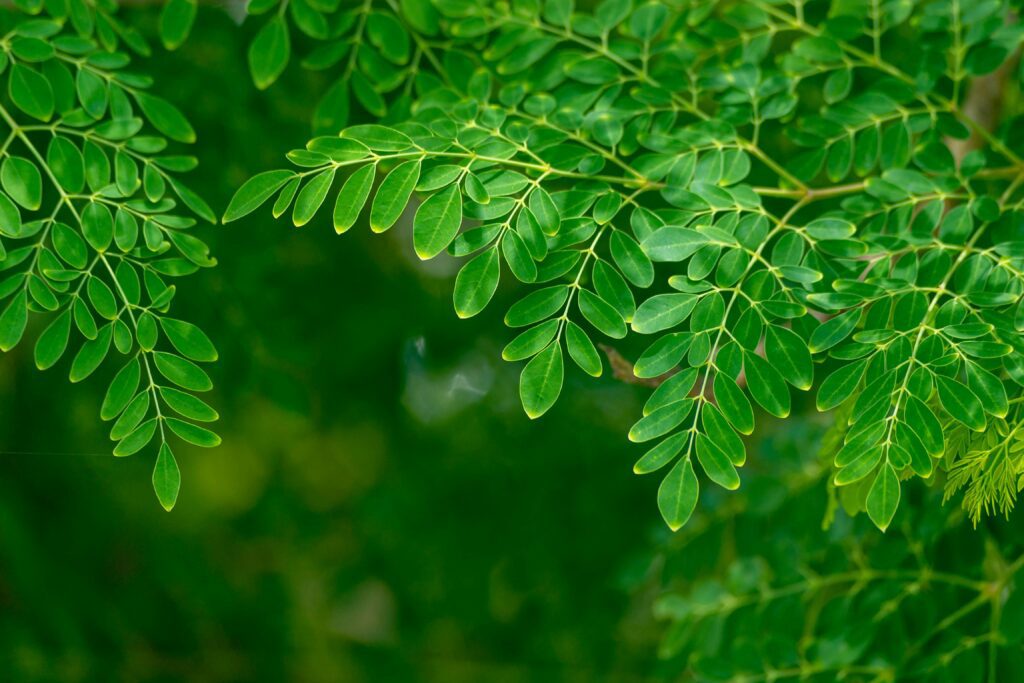Moringa, often called the “Miracle Tree,” is one of the most rewarding plants you can grow at home. But just like any living thing, it thrives when cared for properly throughout the year. Whether you’re growing it in a pot on your balcony or in a small backyard patch, understanding seasonal care is key to enjoying lush growth, nutrient-rich leaves, and even pods.
This guide breaks down how to care for your Moringa tree in every season, using real-life tips and experience-based insights that work in both tropical and moderate climates.

Why Seasonal Moringa Tree Care Matters
Moringa is often celebrated for its hardiness. It’s drought-resistant, thrives in poor soils, and is incredibly fast-growing. But despite its reputation for resilience, seasonal care plays a crucial role in how well your tree performs—especially if you’re growing it for its nutrient-rich leaves, flowers, or pods.
In my experience, even small tweaks in your seasonal approach can mean the difference between a stunted tree and a thriving one. For instance, one summer I neglected to mulch around my Moringa during a heatwave, and I watched the leaves droop within days. On the other hand, a friend in Islamabad followed a year-round care routine and was harvesting fresh leaves almost non-stop.
Here’s why seasonal care is essential:
- Different growth stages require different inputs. Moringa may need more nutrients and water in summer but go nearly dormant in winter.
- Environmental factors change drastically. From intense heat and humidity in monsoon to dryness in winter, your tree needs support to adapt.
- You avoid common pitfalls. Root rot in the rainy season, frost damage in winter, and pest outbreaks in spring can all be prevented with timely action.
Proper seasonal care also aligns with Moringa’s natural cycles. For example, pruning in late winter or early spring encourages dense, bushy growth. Meanwhile, reducing watering in winter helps the tree rest and bounce back more vigorously when the weather warms up.
Another reason this matters: consistency. When you treat your Moringa like a long-term project and adjust your care habits each season, the tree becomes more productive. Whether you’re using the leaves for cooking, drying them for powder, or harvesting pods, consistent care = consistent yields.
So don’t think of Moringa as a “plant and forget” tree. It rewards those who pay attention to its seasonal rhythms. A little mindfulness in each phase of the year goes a long way toward ensuring your Miracle Tree lives up to its name.
Spring: The Kickstart Season
Spring is the season of revival. This is when your Moringa tree wakes up from its winter dormancy.
Key Care Tips:
- Start pruning if you haven’t already. Remove dead or weak branches.
- Fertilize lightly with compost or organic manure to stimulate new growth.
- Water regularly as temperatures rise—but avoid soggy soil.
- Watch for pests, especially aphids and caterpillars on tender new leaves.
Real-World Example: Ahmed in Lahore noticed his Moringa’s growth doubled by mid-spring after applying compost tea every two weeks and lightly pruning the tips.
Spring: The Kickstart Season
Spring is the season of revival. This is when your Moringa tree wakes up from its winter dormancy.
Key Care Tips:
- Start pruning if you haven’t already. Remove dead or weak branches.
- Fertilize lightly with compost or organic manure to stimulate new growth.
- Water regularly as temperatures rise—but avoid soggy soil.
- Watch for pests, especially aphids and caterpillars on tender new leaves.
Real-World Example: Ahmed in Lahore noticed his Moringa’s growth doubled by mid-spring after applying compost tea every two weeks and lightly pruning the tips.
Summer: Maximum Growth Phase
Summer is when Moringa truly comes alive. The heat and longer daylight hours fuel an explosion of growth—if you meet its basic needs.
Why Summer Care Is Crucial: During summer, Moringa can grow several feet in just a few months. However, this rapid growth makes the tree demanding—it needs regular watering, nutrients, and strategic pruning to thrive instead of becoming lanky or stressed.
Key Care Tips:
- Water deeply every 3–4 days in hot climates. Shallow watering causes surface roots to dry up. Focus on early morning or evening watering.
- Harvest regularly. The more you pick the leaves, the more they grow. Frequent harvesting encourages bushy growth and better leaf flavor.
- Mulch the base using organic materials like dry leaves or straw. This locks in soil moisture and keeps roots cool.
- Stake young plants if they grow too tall and slender. Summer winds or fast growth can cause weak stems to bend or snap.
- Feed the tree. Use organic fertilizers like compost tea, banana peel soak, or diluted cow dung water every 15–20 days. Avoid chemical fertilizers if you’re eating the leaves.
- Provide partial shade for baby plants or newly transplanted trees during extreme heatwaves.
My Summer Routine: I prepare a simple banana peel soak in a water bottle every two weeks and pour it around the base. It acts like a multivitamin, giving my Moringa leaves a rich, deep green. I also prune the top shoots lightly every three weeks to promote more side branches and keep the tree from growing too tall.
Real-World Result: My neighbor’s Moringa shot up to 7 feet in one summer using only compost and regular pruning. Meanwhile, mine stayed bushy but was loaded with leaves perfect for drying and storing.
When cared for right, summer turns your Moringa into a lush green machine that rewards you with dense foliage, fresh leaves, and even early signs of pod development.the hottest months.
Monsoon: Manage Moisture Smartly
The monsoon season can be both a blessing and a challenge for Moringa growers. While rain provides natural watering, too much moisture can create conditions that harm the roots and invite diseases.
Why Moisture Management Is Essential: Moringa roots prefer well-drained soil. Constant wetness can lead to root rot, fungal infections, or even death of young trees. That’s why smart moisture management during monsoon is vital for the tree’s survival and long-term health.
Key Care Tips:
- Reduce or skip watering entirely when rainfall is frequent. Let nature do the work.
- Improve drainage. For potted Moringa, make sure containers have multiple drainage holes. You can also add a layer of gravel at the bottom to prevent water buildup.
- Elevate pots or shift them to covered balconies during extended rainfall.
- Watch for fungal issues. Keep an eye out for signs like yellowing leaves, black spots, or powdery mildew. Remove infected leaves immediately.
- Use neem oil sprays once every 10–15 days to prevent fungal growth and repel pests that flourish in humidity.
- Avoid over-fertilizing in wet soil. It can burn the roots and cause nutrient imbalances.
Real-World Insight: Fatima in Karachi noticed leaf yellowing after several days of rain. Upon inspection, she found her pot had clogged drainage holes. After adding more holes and repotting with a sandier mix, her Moringa bounced back within a week.
Personal Tip: I place bricks under my Moringa pots during monsoon to elevate them slightly. This simple hack helps avoid standing water and improves airflow.
By managing moisture smartly, you prevent your Miracle Tree from turning into a soggy mess. Monsoon can be a period of quiet resilience rather than setback, if you give your tree the drainage and protection it needs.
Case Study: Fatima in Karachi saved her container-grown Moringa by drilling extra drainage holes and applying neem oil weekly during heavy rains.
Autumn: Transition Time
As the warm days begin to fade and the air takes on a cooler edge, your Moringa tree also begins to shift its energy. Autumn marks a transition phase—neither active growth nor full dormancy. Understanding this subtle change is key to keeping your Moringa tree healthy through the colder months ahead.
I always say that autumn is not the time to neglect your plant, but to gently guide it into rest mode. Especially if you’re growing Moringa in containers or in regions with varying climates, this seasonal adjustment can be the difference between a thriving tree and one that struggles to bounce back in spring.
Why Autumn Care is Crucial
Moringa is a tropical tree, which means it’s naturally adapted to warm, sun-filled environments. But when grown outside its native climate, particularly in temperate or dry areas, the plant can become stressed if not prepared properly for winter. Autumn gives you a chance to gradually slow the growth process, strengthen the roots, and store what the plant has already produced—mostly in the form of nutrient-rich leaves.
Key Autumn Care Tips
1. Scale Back on Fertilizer Use
Now’s the time to ease up on feeding. During the summer, you may have been giving compost or organic fertilizer every 2–3 weeks. But in autumn, I cut back drastically—maybe once a month or not at all depending on how cold it’s getting. The plant is slowing its metabolism, so overfeeding can do more harm than good.
2. Light Pruning, Not Heavy Trimming
Don’t go overboard with pruning in autumn. I’ve seen many beginners panic when the leaves start yellowing and start hacking the plant back too aggressively. Instead, focus on removing weak, overcrowded, or yellow leaves. Light trimming helps the plant conserve energy while improving air circulation. If your Moringa is in a small pot or grow bag, tidy it up just enough to make it compact and manageable.
3. Harvest and Store the Leaves
This is one of my favorite things about autumn—leaf harvest! Before the cold fully sets in, you can collect Moringa leaves and dry them for powder or tea. The nutrients are still high at this stage, and drying them allows you to continue benefiting from your tree even during winter.
Personally, I like to air dry the leaves in a shaded, well-ventilated area and then grind them into powder. Store in an airtight jar and you’ve got your own superfood for months.
4. Create a Microclimate for Protection
If your plant is in a pot, move it near a wall, especially one that gets some sun. Walls absorb heat during the day and release it slowly at night, protecting your plant from cold winds and temperature dips. In colder climates, consider bringing the pot indoors or into a greenhouse if possible.
5. Water Sparingly but Consistently
With less sun and slower growth, Moringa will require less water. But don’t stop watering altogether. I check the soil once every few days and only water when the top 2 inches feel dry. Overwatering during this season can lead to root rot because the soil stays damp for longer.
Let me know if you want to expand the Winter section next, or want help creating infographics or downloadables for this
Note from Experience: One autumn, I lost a pot-grown Moringa to a cold draft. Since then, I move mine to a south-facing wall before November hits.
Winter: Protecting Dormancy
In cooler climates, Moringa can go dormant or even die back. But don’t worry—it usually revives in spring.
Key Care Tips:
- Stop fertilizing completely.
- Water minimally—only when soil is completely dry.
- Cover roots with mulch or straw to insulate from frost.
- Use grow lights or indoors placement if temperatures drop below 10°C.
Pro Tip: I wrap the base of my Moringa tree with burlap during extreme cold. It’s simple but effective.
Final Thoughts: Know Your Local Climate
Seasonal care varies slightly depending on your region. If you’re in a tropical climate like southern Pakistan or India, your Moringa may stay green year-round. But in cooler areas, treat it like a semi-deciduous plant.
Stay observant. Every Moringa tree teaches you something new each year. With time, care, and a little patience, your Miracle Tree will reward you season after season.


